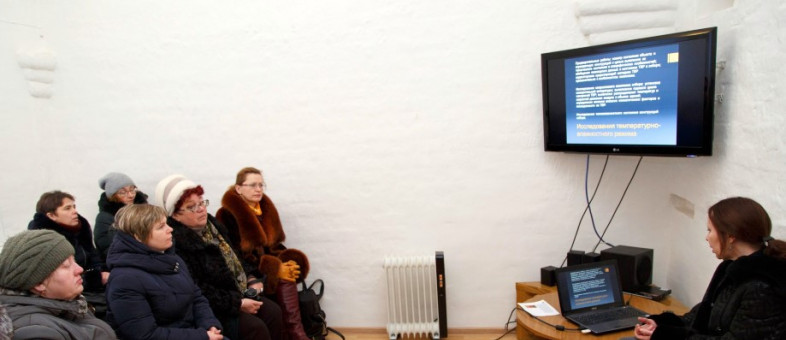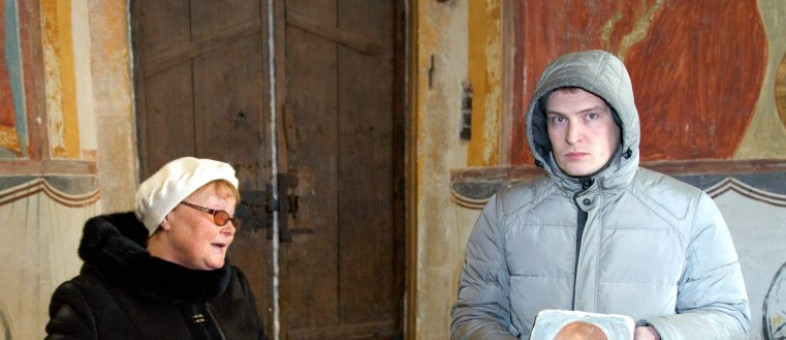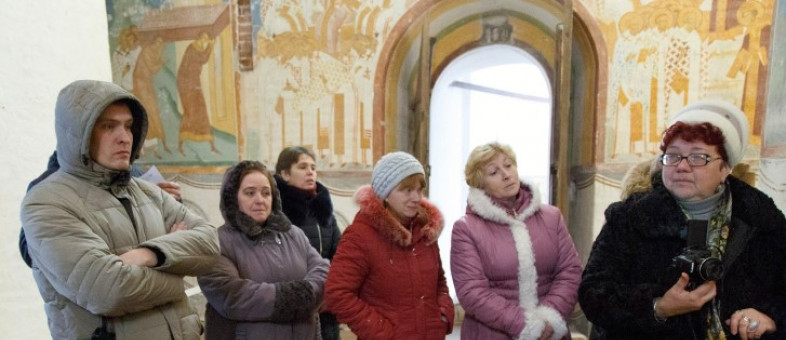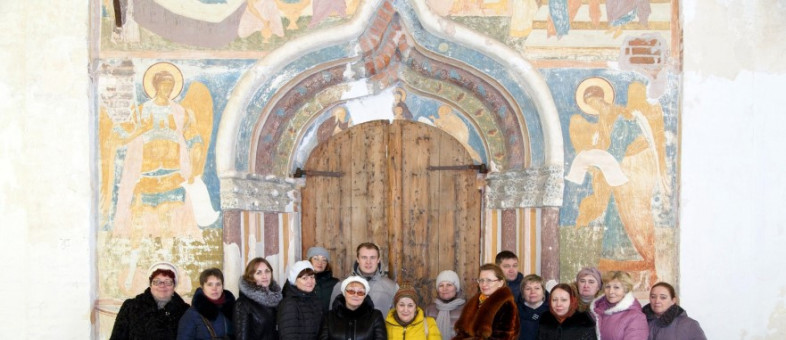Events marking 35th anniversary of adoption of restoration program of frescoes in Nativity of the Virgin Cathedral took place in Museum of Dionisy’s Frescoes
The Museum of Dionisy’s Frescoes thanks everybody who has participated in this significant for the museum event.
Guests and museum employees learnt about goals and results of the program that included design and restoration work in the Nativity of the Virgin Cathedral and the buildings of the whole ensemble; research of the preservation state of Dionisy’s frescoes; analysis of the temperature and humidity conditions.
This program started the multi-year period of large complex work. For example, during the research stage (1981-1986), specialists took photographs of the compositions and details of the frescoes to understand their state of preservation; made cartograms with spots where gesso and paint layers were lost; studied the techniques of painting of Dionisy and his sons; carried out physical and chemical researches of the composition of gesso and painting, microclimate. Besides, this period became the beginning of art research.
The second stage of work included elaboration of the methods of strengthening of plaster and paint layers approved by the Commission on the Methods of Restoration and Preservation of Monumental Painting in the Research Council of the USSR in 1988. The restorers worked in close contact with experts of the institutes of the system of the Academy of Sciences of the USSR: the Institute of Molecular Biology, the N.D. Zelinsky Institute of Organic Chemistry, the Institute of Geology and Mineralogy, the Institute of Microbiology, the M.M. Shemyakin Institute of Bioorganic Chemistry, the Institute of Geochemistry, the Institute of Steel (equipment of the X-ray phase analysis), the Institute of Chemical Physics and the NGO “Astrophysics” (equipment, optics, illuminators), the Institute “Spetsproyektrestavratsiya”, the Institute of Structural Physics, the I.V. Kurchtov Institute and some sub-departments of Moscow State University and other scientific institutions.
The third practical stage of work lasted from 1988 to 2011. They strengthened and cleared the wall painting in the cathedral, regulated the temperature and humidity conditions, installed a wireless control system during this period.
During the restoration process, they made plenty of discoveries. The most important among them was the conclusion that the frescoes in the cathedral were unique in the Old Russian monumental painting according to the composition of pigments and the original technique of painting. The complex approach to the restoration process based on the minimal invasion to the structure of the monument was absolutely new. Such focused attention to the site during restoration promoted its inclusion into the UNESCO World Heritage List. Thanks to this work, they managed to save the unique creation of the artist providing optimal conditions of its preservation and giving an opportunity to present it in full regardless of weather conditions.
Guests and museum employees saw a fragment of the film “Curators” directed by E.B. Savina, art critic of Vologda. It contained some moments that went down in history: presentation of the UNESCO certificate to G.O. Ivanova (director of the Kirillo-Belozersky Museum-Reserve) and M.S. Serebryakova (director of the Museum of Dionisy’s Frescoes), the interview with O.V. Lelekova, author of the method of conservation of the wall painting, recorded during the period of work in the Ferapontov Monastery.
The event was concluded with the lecture “Myths about Restoration” in the Nativity of the Virgin Cathedral that quickened interest and caused dispute of the listeners.
Official name of the museum:
The Federal State Budgetary Institution of Culture “Kirillo-Belozersky Historical, Architectural and Art Museum-Reserve”
Founded:
In 1924
Museum status:
It was included into the State List of Particularly Valuable Objects of Cultural Heritage of the Peoples of the Russian Federation in 1997.

 найти на плане
найти на плане




